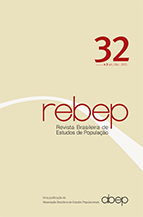Simulação da quantidade máxima de domicílios permitida por quadras em Belo Horizonte
Palavras-chave:
Simulação domiciliar, Geotecnologias, Mapeamento dasimétrico, Expansão urbanaResumo
O artigo propõe uma metodologia de simulação da quantidade máxima de domicílios comportada por cada quadra do município de Belo Horizonte. Os parâmetros utilizados na simulação foram extraídos das informações cadastrais da Prefeitura, associadas com os resultados dos Censos 2000 e 2010. A simulação é desenvolvida a partir de uma base georreferenciada das quadras do município, construída a partir do mapeamento dasimétrico da distribuição domiciliar na capital mineira em 2011. Em um segundo momento, é realizada a simulação do limite máximo de novos domicílios permitidos pelas leis municipais, caso todos os lotes vagos sejam ocupados em sua capacidade máxima e caso todas as edificações com potencial de demolição cedam lugar a novos edifícios residenciais também construídos em sua capacidade domiciliar máxima. Os resultados mostram qual seria o máximo de domicílios que poderia vir a se instalar em Belo Horizonte no futuro. Estas informações servem como insumo para os dados de projeções demográficas de pequenas áreas, ao apontar onde a expansão e o adensamento domiciliar podem ocorrer, bem como o limite máximo suportado em cada quadra. De forma complementar, são indicados caminhos para discutir os limites potenciais da ocupação urbana de Belo Horizonte, as áreas preferenciais de adensamento e suas implicações para o planejamento.
DOI http://dx.doi.org/10.1590/S0102-3098201500000030
Downloads
Downloads
Publicado
Como Citar
Edição
Seção
Licença
Os artigos publicados na Rebep são originais e protegidos sob a licença Creative Commons do tipo atribuição (CC-BY). Essa licença permite reutilizar as publicações na íntegra ou parcialmente para qualquer propósito, de forma gratuita, mesmo para fins comerciais. Qualquer pessoa ou instituição pode copiar, distribuir ou reutilizar o conteúdo, desde que o autor e a fonte original sejam propriamente mencionados.

